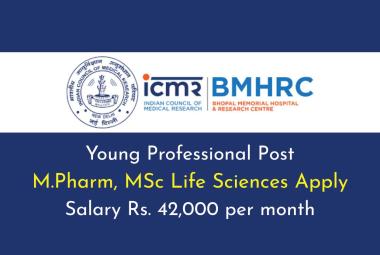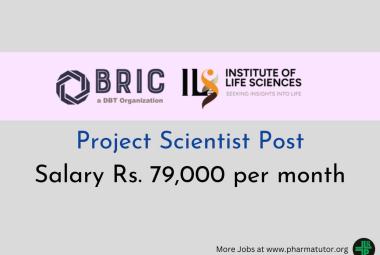{ DOWNLOAD AS PDF }
 ABOUT AUTHORS:
ABOUT AUTHORS:
Shashi Shekhar Anand, Navgeet, Balraj Singh Gill*
Centre for Biosciences,
School of Basic and Applied Sciences,
Central University of Punjab, Bathinda, India
gillsinghbalraj@gmail.com
ABSTRACT
The word ‘epigenetic’ was first coined by Conrad Waddington in 1946. It deals with functionally relevant modifications to the genome that do not include a change in the nucleotide sequence. Till date observation has focused on the functions of genome sequences and how their regulation occurs. The emerging epigenetic changes and the interactions between cis-acting elements with protein factors plays a central role in gene regulation as well as give insight to various diseases. To evaluate the crosstalk of DNA and protein by taking account of the whole genome, one new evolving technique which is called as ChIP-chip, works on the principle of combining chromatin immunoprecipitation with microarray. ChIP-chip has been recently used in basic biological studies and may be improved further and can be useful for other to aspects, like human diseases. Now a days large amount of discoveries by ChIP-chip and other high-throughput techniques like this may be connected with evolving bioinformatics to add to our knowledge of life and diseases.
[adsense:336x280:8701650588]
REFERENCE ID: PHARMATUTOR-ART-2348
|
PharmaTutor (Print-ISSN: 2394 - 6679; e-ISSN: 2347 - 7881) Volume 3, Issue 7 Received On: 17/03/2015; Accepted On: 30/03/2015; Published On: 01/07/2015How to cite this article: SS Anand, Navgeet, BS Gill; Breakthroughs in Epigenetics; PharmaTutor; 2015; 3(7); 16-24 |
INTRODUCTION
The word ‘epigenetic’ was first coined by Conrad Waddington in 1942. He described the term epigenetics as ‘The interactions of genes with their environment that bring the phenotype into being. These Days it also includes cellular mechanisms which control somatically heritable gene expression states without changing the underlying DNA sequence such as Examples of such modifications like DNA methylation and histone modification, both are regulating gene expression without modifying the underlying DNA sequence[1]. It can also be said like this that it is the study of mitotically heritable changes in gene expression that is not encoded by the DNA sequence. Epigenetic modifications help in normal development and the maintenance of gene expression patterns in mammalian cells and failing to which leads to diseases [2]. Epigenetic modifications are dependent upon some change in chromatin structure that defines how genetic information is organized within a cell. Chromatin is made up of Nucleosomes, which consist of ~146 base pairs of DNA enfolded around the octamer of four core histone proteins (H3, H4, H2A and H2B)[3]. The epigenetic processes which modify chromatin structure include: DNA methylation, covalent histone modifications, non-covalent mechanisms (nucleosome remodeling) and microRNAs. Co-operation between these processes regulates the accessibility and compactness of chromatin and in so doing it modulates gene expression [4]. Some of the epigenetic changes have been experimentally proven to be heritable. It deals with functionally relevant modifications to the genome which not involve a change in the sequence of nucleotide [5].
DNA Methylation
The epigenetic DNA Methylation is processed by DNA methyltransferase (DNMTs) which uses S-adenosyl-methionine (SAM) as the methyl donor. Primarily Methylation occurs at the carbon-5 position of cytosine residues within CpG dinucleotides. It is very specific and always favors the region where a cytosine nucleotide is located just next to a guanine nucleotide that is bonded by a phosphate. That is called as a CpG site CpG dinucleotides are not evenly distributed over the genome but are instead found clustered in CpG rich DNA stretches called CpG islands and in repetitive sequences such as centromeric repeats, retrotransposon elements and rDNA. CpG islands are the regions which have a length of around 500 bp with G+C content greater than 55 % [6]. DNA methyltransferase the mammalian DNA methyltransferase (DNMT) is the family which consist of three types called as DNMT1, DNMT3A and DNMT3B. They also contain an accessory protein DNMT3L which is responsible for the regulation of DNA methylation in all cell types [7].
DNMT1
DNMT1 is a protein that has weight of 183 Kd and is responsible for the maintenance of methylation during replication and repair. In vitro, it has been reported to have a preference for hemi-methylated DNA over Unmethylated substrates thus allowing it to copy the methylation paradigm of the parental strand to the just synthesized daughter strand. It is known as maintenance enzyme, but it also involved in the de novo methylation and essential for the viability of abnormal cells like cancer [8].
DNMT3 family
DNTM3A and DNMT3B are known as active de novo methyltransferase responsible for cytosine methylation at previously unmethylated CpG sites. Both enzymes have a conserved PWWP domain responsible for their methyltransferase activity. DNMT3A and DNMT3B can act independently of one another. The DNMT3A gene is situated on chromosome 2p23 and the protein is found in both the cytoplasm and nucleus where its expression is developmentally regulated. The DNA binding domain in DNMT3A is 50 residues long, the protein can dimerizes, thus doubling the DNA binding surface and allowing it to methylate in one binding event, two CpGs separated by one helical turn. Knockdown of DNMT3A inhibits melanoma growth and metastasis in mouse melanoma models suggesting that it may have a chief function in the pathogenesis of this type of tumour [9].
DNMT3B
The DNMT3B gene is located on chromosome 20q11.2.Its six alternatively spliced transcript variants have been reported although the full-length sequences of variants 4 and 5 have not been determined. It is reported that there is overexpression of DNMT3B in breast cancer and colorectal cancer [10].
DNMT3L
DNMT3L lacks those residues in the C-terminal domain which are required for methyltransferase activity and its contribution to DNA methylation is dependent on its cooperation with the de novo DNMTs. DNMT3L has been shown to co-localize and co-immunoprecipitate with DNTM3A and DNMT3B and to enhance the activity of both enzymes [11].
Nucleosomes
Nucleosomes are the building blocks of the chromatin, and they depict two coils of genomic DNA (147 base pairs) swathe around an octamer of two sub-units of each of the core histones H2A, H2B, H3, H4 (Figure 1).The H1 histone holds DNA; it is not a part of nucleosome. The histone octamer is composed of H2A, H2B, H3 and H4 molecule. Each nucleosome is separated by almost 54 bps of linker DNA, and resulting nucleosomal array constitutes a chromatin fibre of ~10nm in diameter. This simple ‘beads-on-string’ arrangement is folded in to more condensed, ~30nm thick fibres that are stabilized by binding of a linker histone to each nucleosome core. It condenses to form loops averaging 300nm in length, and that 300nm fibres are compressed and folded to produce a 250nm wide fibre having diameter of 700nm. Then further tight coiling of the 250nm fibre produces the chromatid of a chromosome that has a diameter of1400. The chromatin structure fulfils essential functions, not by condensing and protecting DNA and by preserving genetic information and controlling gene expression [12].
 Fig 1. Complex Chromatin Condensation
Fig 1. Complex Chromatin Condensation
Source:https://home.ccr.cancer.gov/connections
Histones contain a high percentage of arginine and lysine, and several positively charged amino acid that adds net positive charge. The positive charges which attract the negative charges on the phosphate group present on DNA and helps to hold the DNA in contact with the histones [13]. The amino-terminal portion of the core histone proteins is subjected to various post- translational modifications. Chromatin mitigation can occur through covalent additions to histones [14]. There are several different types of Histone modifications, some of them are as follows: methylation, acetylation, phosphorylation, ubiquitination and sumoylation.
Chromatin Remodeling and Compaction
Nucleosomes are very densely spaced and packaged, and they remodel it so that to allow access to transcription factors. This is done by the help of adenosine triphosphate (ATP)-dependent chromatin remodelling complexes that alter nucleosome-DNA contacts, help in nucleosome repositioning, or regulate the incorporation of variant histone into the nucleosome [15].
Histone Methylation
Histone modification can be explained by addition of one, two or three methyl groups. Cell nucleus contains DNA is wound around the histones. Methylation of histones is associated with inactivation of the transcription and the condensation of the chromatin to densely coiled form. Demethylation is associated with de-condensation of chromatin and increase in the transcription activity [16]. Histone methylation as a mechanism can be associated with either transcriptional activation or repression. Although, dimethylation of histone H3 at lysine 9 (H3K9) is a signal for transcriptional silencing (Figure 2). Methylation process of some lysine and arginine residues of some histones like H3 and H4 results in the transcriptional activation [17].

Fig 2. Histone H3 Methylation
Source: Nature reviews/molecular cell biology
Addition of a methyl group to the histones by histone methyl -transferases, can either activate or further repress the transcription process; it depends on the amino acid which has gone through methylation and the presence of other methyl groups in the vicinity.

Fig 3.Methylation Mechanism
Source:https://www.methods.info/Methods/DNA_methylation.
Histone methyl-transferase: Histone methyl transferases are the enzymes that transfer methyl groups from S-adenosyl methionine (SAM)(Figure 3) to the arginine and lysine residues of H3 and H4 histones also Regulate transcription, the nobility of the genome and epigenetic inheritance (Figure 3) [17].
Histone Acetylation
Acetylation can be described as a reaction that introduces an acetyl functional group in to an organic compound. Histone acetylation is the transfer of an acetyl group from acetyl CoA or acetyl anhydride to the lysine amino groups on the N-terminal tail of histones. This enzyme activity is catalyzed by enzymes called histone acetyl transferases (HATs) and it reverse by

Fig. 4. Effect of acetylation
Source: nature reviews/molecular cell biology 8,947-956
the another enzyme called histone deacetylases (HDAC). The histones are mainly acetylated and deacetylated on lysine residues in the N-terminal tail and also on the surface of the nucleosome core for of gene regulation. It as an essential part of gene regulation.
Histone Phosphorylation
Histone Phosphorylation is the modification in which there is an addition of a phosphate group. Phosphorylation is catalyzed by the various specific protein kinases, whereas phosphatases mediate removal of the phosphate group (Figure 5). The most studied sites of histone phosphorylation are the serine. Phosphorylation of histones can also be a vital regulatory signal. H2A variant, H2AX that helps in the DNA repair by the process of phosphorylation. It has an important role in DNA damage response and DNA repair.

Fig 5. Phosphorylation of serine chain
Fig.source:pharmaceuticalintelligence.com
Histone H3 phosphorylation has been reported to play important roles in both transcription and chromatin condensation during mitosis.
Sumoylation
Sumoylation is the type of post translational modification with small ubiquitin related proteins of the SUMO family. Modification requires ATP, a SUMO E1, a SUMO E2, and E3 ligases that work on specific targets. Isopeptidases removal of SUMO is done by Isopeptidases, and it helps in reversibility and dynamics of this modification. SUMO attachment leads to regulation of protein to protein and protein to DNA interactions, subcellular localization, enzymatic activity, and in some cases protects protein from ubiquitin dependent degradation. It was reported that H4 can be sumoylated. Sumoylation has three general outcomes for a modified protein [18] (Figure 6).

Fig 6. Sumoylation
Source: Nature Reviews Molecular Cell Biology 8, 947-956.
NOW YOU CAN ALSO PUBLISH YOUR ARTICLE ONLINE.
SUBMIT YOUR ARTICLE/PROJECT AT editor-in-chief@pharmatutor.org
Subscribe to Pharmatutor Alerts by Email
FIND OUT MORE ARTICLES AT OUR DATABASE
Epigeneticsand Environment
The epigenetic changes due to environment are small, potentially cumulative, and they may develop by passing time, epigenetic changes and diseases. Several studies have established an association between DNA methylation and environmental metals like nickel, cadmium, lead, and mostly arsenic.Cadmium is a well-known carcinogen that has very low mutagenicity. The carcinogenetic property is because it produces ROS as well as alteration of DNA methylation that play a predominant biological role. Arsenic is a well known carcinogen that lacks carcinogenicity in animals yet. Inorganic arsenic is enzymatically methylated for detoxication that uses Adenosyl-methionine (SAM) in the process. Nickel ion exposure has been reported to increase global H3K9 mono- and dimethylation. Also, it has been related with increased DNA methylation and long-term gene silencing. Methyl mercury is a well-known environmental contaminant and a strong neurotoxic agent that may be present at high levels in sea-food. Prenatal exposure to methylmercury causes persistent changes in learning and motivational behaviour in mice. In benzene, DNA methylation modifications are induced by low-benzene exposure mainly affecting traffic police officers. High-level exposure to benzene leads to increased risk of acute myelogenous leukemia (AML)[19].
Epigenetics and Hepatocellular Carcinoma
DNA Methylation and HCC
Epigenetic lesions typically in liver cancer consist of genome-scale changes in the DNA methylation, loci-specific DNA hyper methylation, dysfunction of histone-modifying enzymes, and abnormal expression of ncRNAs. Cancer-related changes in DNA methylation are can be effective biomarkers because they can be readily detected and quantified from fixed tissues. As a result, there are many findings reporting DNA methylation patterns peculiar to liver cancers of different etiologies, including recent genome-wide studies. In the recent studies, there were 230 genes were identified whose promoters were hypomethylated in HCC DNA methylation and in combination of transcriptome mapping in human HCC (epigenetically induced), and there are 322 genes that were hypomethylated and under expressed in tumours (epigenetically repressed). Genome-Wide DNA methylation, studies have revealed that tumours have very high cellular heterogeneity as such noticed differences in DNA methylation patterns may simply point out differences in numbers of tumor to normal cells alternatively identifying epigenetic signatures relevant to cancer biology.
Viruses as Drivers of Epigenetic Changes Underlying HCC
Cancers that originate from a virus can contribute understanding into relationships between epigenetics and tumor biology. The proteins like Hbx which has oncogenic origin the induces the expression of DNMT1 and recruits DNMT1, 3a, and 3b and which stimulate hyper- methylation of IGFBP-3 andp16. Overexpression of miR-152 and results into global DNA hypo–methylation. Whereas its inhibition of miR-152 leads to global hyper- methylation and increased DNA methylation at the GSTP1andCDH1 (fig. 7). Tumor suppressor genes Studies in HBV- and HCVinduced HCC have spotted common active mutations in the SWI/SNF-like ATP-dependent chromatin remodelling enzymesARID1Aand ARID2.These enzymes are important for remodelling chromatin into a transcriptionally active state [20].

Source: epigenetics of liver diseases, Mann (2014)
Fig.7 Viruses as Drivers of Epigenetic Changes
The above figure which explain epigenetic crosstalk and its impact on liver functioning and disease. The histone methyltransferaseSUV39H is a central regulator central regulator in liver physiology and diseases. Also, it is downregulating the expression of the microRNA miR-122, which affect the epigenetic sway of gene networks involved in the metabolism of lipid and HCC. Also, miR-122 is critical in the lifecycle of HCV. SUV39H regulates histone alteration at genes ciphering regulators of cell proliferation as well as migration; its overexpression is associated with HCC. Expression of SUV39H is post-transcriptionally regulated by miR-125, which in turn is in Influence of t complex PRC2 and its H3K27 methyltransferase EZH2.
Epigenetics and Non-alcoholic Steatohepatitis (NASH)
The association between nutrition, epigenetics, and metabolic disease is firmly established. The phenotype of the Agouti mouse, which has obesity and susceptibility to cancer, is prevented by supplementation of the maternal diet with methyl donors. Diets Depleted of methyl donors promotes DNA hypomethylation and the progression of steatosis in rodents. Also, it was noted that Supplementation of high-calorie food with methyl donors halts NAFLD. It depicts that the epigenetic modification that modify hepatic fat metabolism may be due to dynamic alterations in DNA methylation. Investigation was also carried out with samples of paired liver biopsies obtained from mouse of 5-9 months of age following a bariatric surgery. Result shows that gene encoding protein-tyrosine phosphatase epsilon(PTPRE) is a negative regulator of insulin signaling, became hypermethylated and transcriptionally downregulated with weight loss. This result shows that there is a link between loss of weight and control of hepatic insulin sensitivity in the mouse model [21, 22].
Epigenetics and Liver Disease Imprinting
The concept that environmental cues may indigestible adaptive traits sometimes favours so-called “Lamarckian” inheritance. There is some proof that supports it. Male inbred mice which were on a low-protein diet gave offspring that inherited elevated hepatic expression of genes regulating lipid and cholesterol metabolism. Surprisingly, the above-mentioned studies showed that DNA methylation and gene expression for PPARa and PPARc were altered. This may be because these nuclear hormone receptors bear an epigenetic hub for integrating ancestral environmental information. Evidence for Lamarckian-like inheritance is rarely seen in humans, but it was reported by Veenenda al et al., body mass index (BMI) as well weights are increased in F2 generation i.e. grand children of males exposed to in uterofamine. This suggests that an epigenetic modification to dietary factors may be substantial and transmissible across multiple generations
Chip-chip technology a new approach in epigenetics
From the past years, the research is focused on the functions of genome sequences and their regulation. The upcoming epigenomic changes and the interactions between cis-acting elements and protein factor a big impact and play a central role in gene regulation. For understanding the interaction between DNA and protein on the whole genome basis, the new emerging technique, called ChIP-chip has been used. This technique uses a combination of chromatin immunoprecipitation with microarray. This type of combination will help in screening and targeting of critical transcription factors and profiling the genome-wide distribution of histone alterations, which will help in conducting a large-scale study, such as the Human Epigenome (fig 8 and fig 9).There is two ways analysis of ChIP-chip is used in histone modification studies. First is to detect the distribution of histone modifications by employing antibodies specially targeting these modifications the second type is employing ChIP-chip to discover not the altered histones, but the enzymes that catalyse the histone modification reactions. This type of technology helps in profiling the expression and establishes the correlation of histone markers with transcription activity in humans. Three different types of arrays have been applied in studying histone modifications with ChIP-chip. One is CpG island array which showed a strong association between CpG methylation and histone modifications .the second type is the cDNA array, which produced information on the distribution of histone methylation motif coding regions of human genes. By these studies, ChIP-chip yielded a wider view than gene-by gene studies and significantly in vivo, the genome-wide binding data produced by ChIP-chip can be used for bioinformatics analysis to identify binding elements. One can further take the data from ChIP-chip, and use it in expression profiling, comparative genomic and published literature to build a global view of the regulation network. In ChIP-chip, mostly formaldehyde is used for cross link that not only interacts protein-DNA but also interacts from protein to protein. ChIP-chip containing antibodies in opposition to methyl-CpG binding proteins can also be used to identify the methylated targets [23] .

Fig 8. Chip on chip working diagram
Source: Cancer Res 2006; 66: (14).July 15, 2006

Fig 9.Working flow of chip on chip technology
Source:https://en.wikipedia.org/wiki/ChIP-on-chip
Discussion and future prospective
Genetic and epigenetic modification combines to influence detected variation in disease susceptibility and variable disease progression. There are already on-going clinical trials with HDAC inhibitors in cancer, a miR-122 inhibitor miravirsen in chronic HCV, so epigenetic therapies may playa big role in the future.Particularly, very few HDAC inhibitors have succeeded in phase II testing due to unfavorable side effects including fatigue, constipation, diarrhoea, and dehydration. Histone modifications act in orderly and coordinated fashion to control cellular processes such as transcription, DNA replication and DNA repair. Histone acetylation is associated with transcriptional activation, but the effect of histone methylation depends on the type of amino acid and its position in the histone tail. Phosphorylation is mainly related with the repair of DNA. An epigenetic alteration has important implications for human cancer treatment. Research on chromatin modifications that is a newly evolving field is under process. It holds the promise of further improving our knowledge of tumorigenesis and facilitating the development of novel strategies to prevent diagnoses and treat cancer. Important aspect of methylation is that it inactivates tumor suppressor genes as it helps in silencing of genes in cancer cells. New techniques like DNA sequencing, two-dimensional gel electrophoresis, proteomic and expression microarray, and other system tools are required which help to understand the structure and amount of cell components. The genome-wide, high-throughput tools, like Chip-chip, are necessary technique to study the activities of vital components, like epigenetic alterations and DNA-protein binding in cells. Now a days in basic biological studies we use chip-chip assay frequently and it may be modified further and then expanded to other aspects, such as human diseases. Lastly, for future the large amount of discoveries by ChIP-chip, and other high-throughput techniques like this may be connected with evolving bioinformatics to add to our knowledge of life and diseases and understanding of epigenomic changing pattern.
REFERENCES
1. Rakyan VK and Stephan Beck., Epigenetic variation and inheritance in mammals, Current Opinion in Genetics & Development, 2006; 16; 573-577.
2. Jaenisch R. & Bird A; Epigenetic regulation of gene expression: how the genome integrates intrinsic and environmental signals. Nature genetics, 2003; 33; 245-254.
3. Kütting B., Bonsmann G., Metze D., Luger T.A. & Cerroni L; Borrelia burgdorferi associated primary cutaneous B cell lymphoma: complete clearing of skin lesions after antibiotic pulse therapy or intralesional injection of interferon alfa-2a; Journal of the American Academy of Dermatology; 1997; 36(2): 311-314.
4. Richmond T.J. & Davey C.A; The structure of DNA in the nucleosome core; Nature; 2003; 423(6936); 145-150.
5. Bird A; Perceptions of epigenetics; Nature; 2007; 447(7143); 396-398.
6. Jones P.A. & Baylin S.B; The fundamental role of epigenetic events in cancer. Nature Reviews Genetics; 2002; 3(6); 415-428.
7. Robertson K.D; DNA methylation, methyltransferases, and cancer; Oncogene; 2001; 20(24); 3139-3155.
8. Champion, C., Guianvarc'h, D., Sénamaud-Beaufort C., Jurkowska, R. Z., Jeltsch A., Ponger L.; Guieysse-Peugeot, A.-L. Mechanistic insights on the inhibition of c5 DNA methyltransferases by zebularine; PloS one, 2010; 5(8); e12388.
9. Luczak M.W., Roszak A, Pawlik P, Kedzia H, Kedzia W, Malkowska-Walczak, Jagodzinski P.P; Transcriptional analysis of CXCR4, DNMT3A, DNMT3B and DNMT1 gene expression in primary advanced uterine cervical carcinoma; International journal of oncology; 2012; 40(3); 860-866.
10. Soto-Reyes E., González-Barrios R., Cisneros-Soberanis F., Herrera-Goepfert R., Pérez V, Cantú D, Herrera, LA; Disruption of CTCF at the miR-125b1 locus in gynecological cancers; BMC cancer; 2012; 12(1); 40.
11. Turek-Plewa J, & Jagodzinski P. The role of mammalian DNA methyltransferases in the regulation of gene expression; Cellular and Molecular Biology Letters; 2005; 10(4); 631.
12. Kanwal R. and Gupta S; Epigenetics and cancer; Journal of Applied Physiology; 2010; 109(2): 598-605.
13. Krebs J., Lewin B, Goldstein ES, & Kilpatrick ST; Lewin's essential genes; Jones & Bartlett Publishers; 2013.
14. Tollefsbol T; Handbook of epigenetics: the new molecular and medical genetics; Academic Press, 2010.
15. Mann Derek A; Epigenetics in liver disease; Hepatology; 2014; 60(4); 1418-1425.
16. Völkel P., Angrand P.-O; The control of histone lysine methylation in epigenetic regulation; Biochimie; 2007; 89(1); 1-20.
17. Nelissen EC, van Montfoort AP., Dumoulin JC, Evers, JL; Epigenetics and the placenta; Human reproduction update; 2011; 17(3); 397-417.
18. Kouzarides T; Chromatin modifications and their function; Cell; 2007; 128(4); 693-705.
19. Bollati V, Baccarelli A. Environmental epigenetics; Heredity; 2010; 105(1); 105.
20. Shen J, Wang S, Zhang YJ, Kappil M, Wu HC, Kibriya MG, Lee PH; Genome-wide DNA methylation profiles in hepatocellular carcinoma; Hepatology; 2012; 55(6); 1799-1808.
21. Carone BR, Fauquier L, Habib N, Shea JM, Hart CE, Li R, Zamore PD; Paternally induced transgenerational environmental reprogramming of metabolic gene expression in mammals; Cell; 2010; 143(7); 1084-1096.
22. Murphy SK, Yang H, Moylan CA, Pang H, Dellinger A, Abdelmalek MF, Tillmann HL; Relationship between methylome and transcriptome in patients with nonalcoholic fatty liver disease; Gastroenterology; 2013; 145(5); 1076-1087.
23. Wu J, Smith LT, Plass C, Huang TH; ChIP-chip comes of age for genome-wide functional analysis; Cancer research; 2006; 66(14); 6899-6902.
NOW YOU CAN ALSO PUBLISH YOUR ARTICLE ONLINE.
SUBMIT YOUR ARTICLE/PROJECT AT editor-in-chief@pharmatutor.org
Subscribe to Pharmatutor Alerts by Email
FIND OUT MORE ARTICLES AT OUR DATABASE










